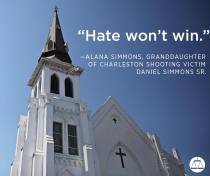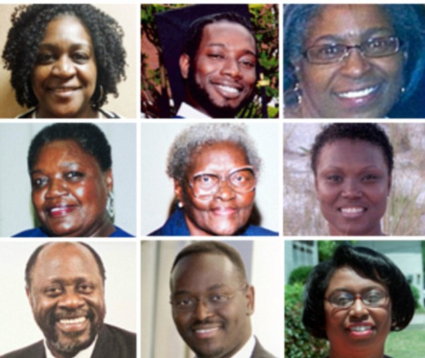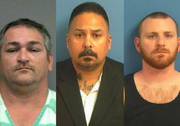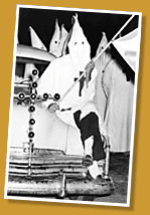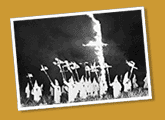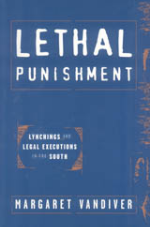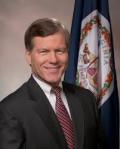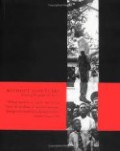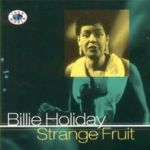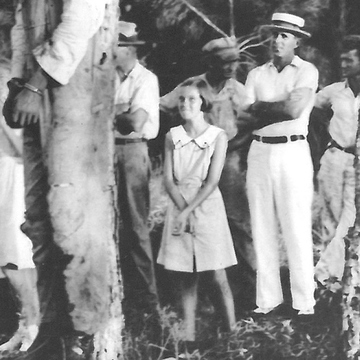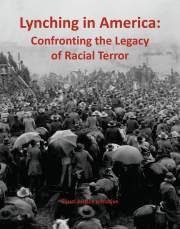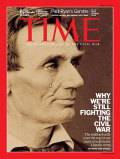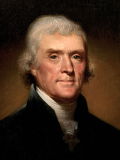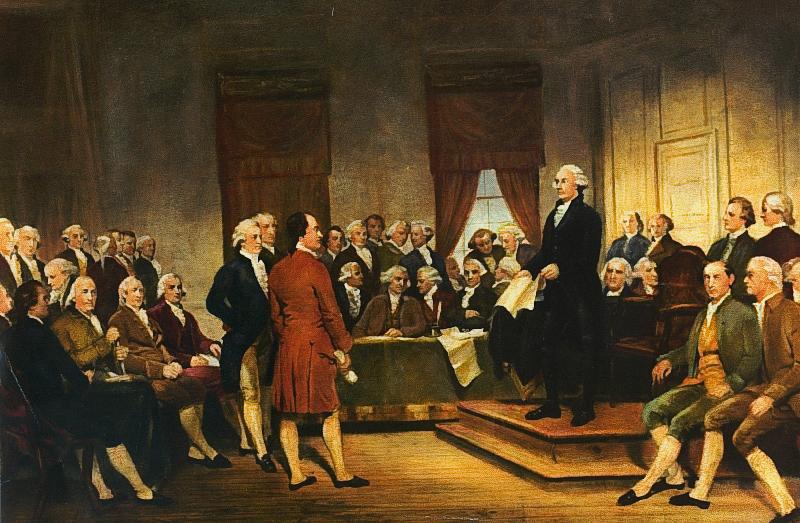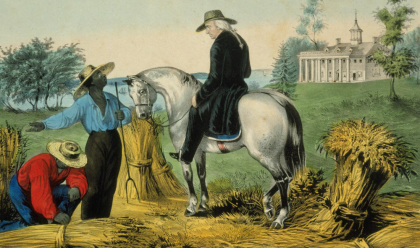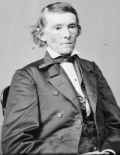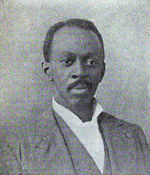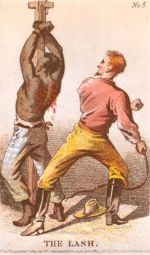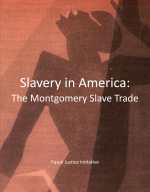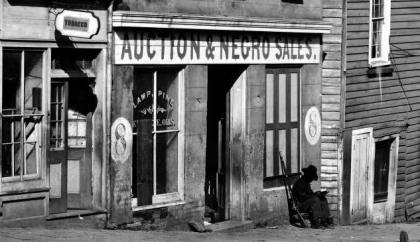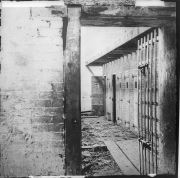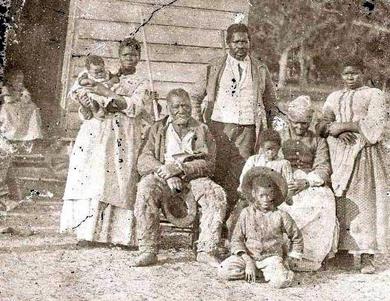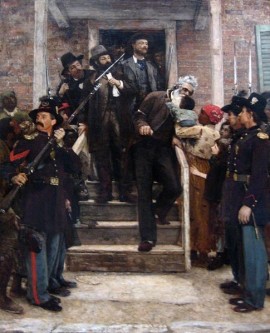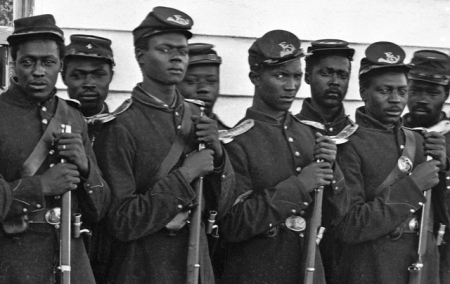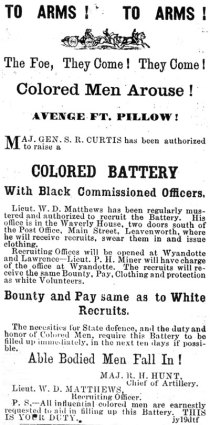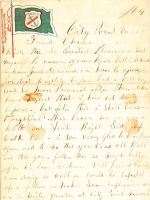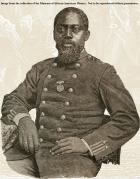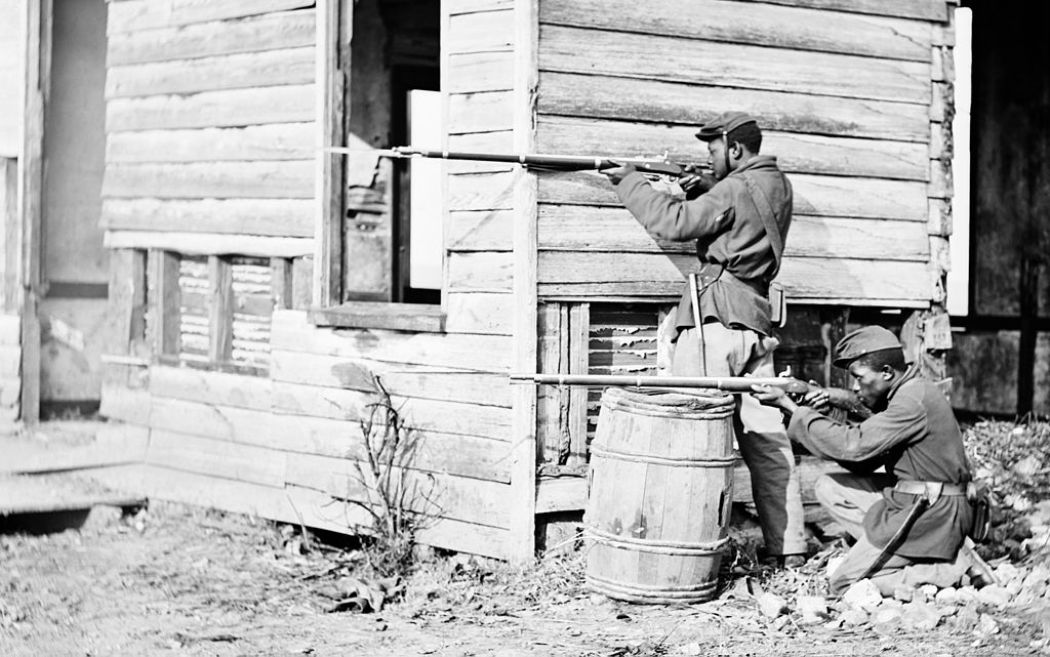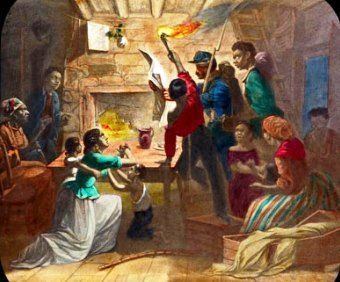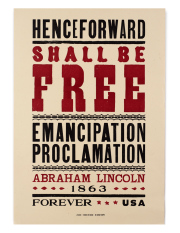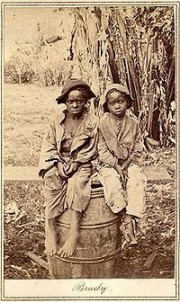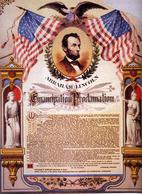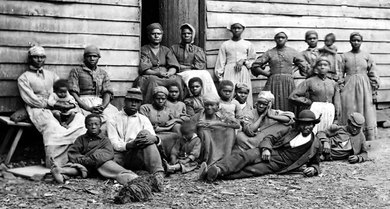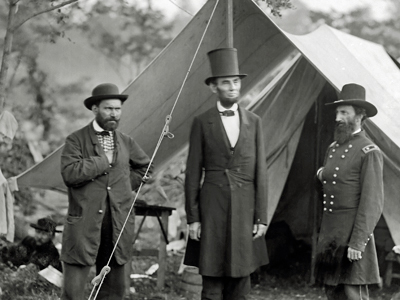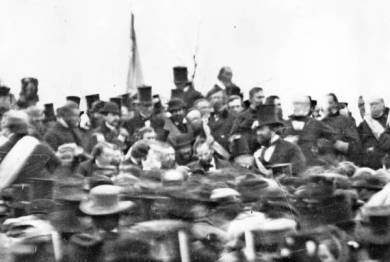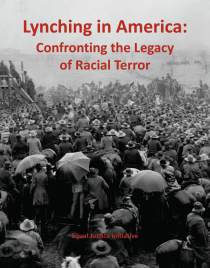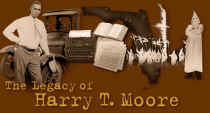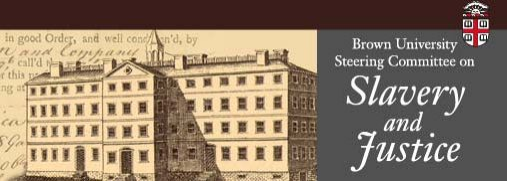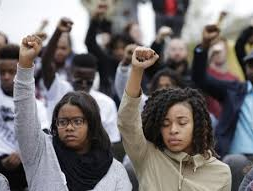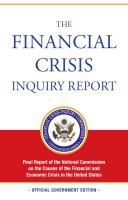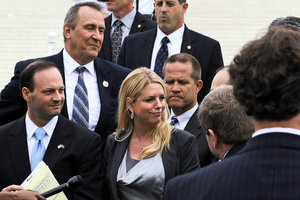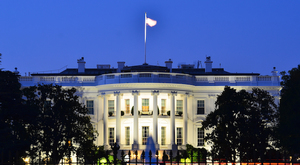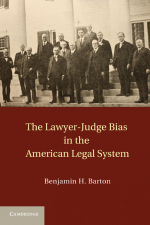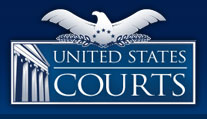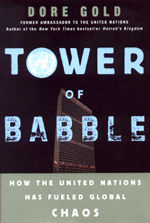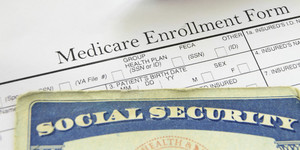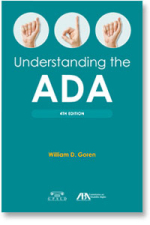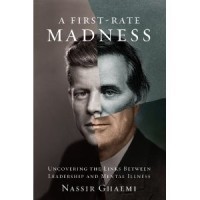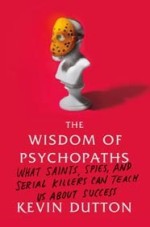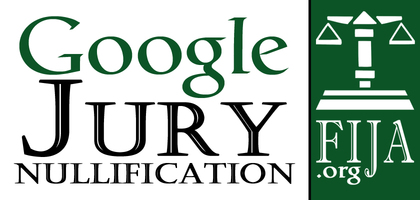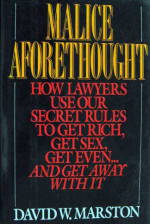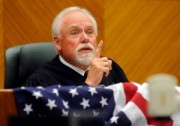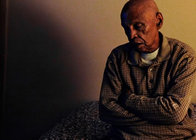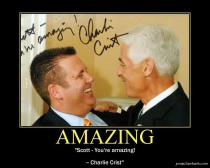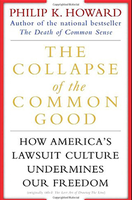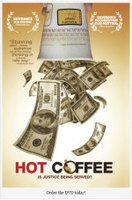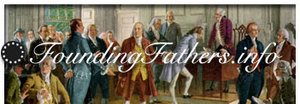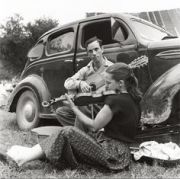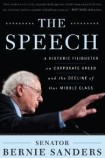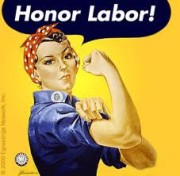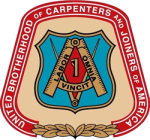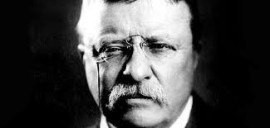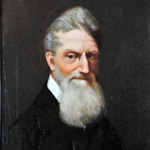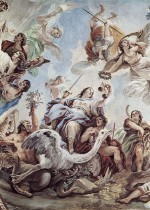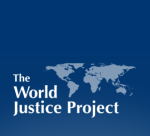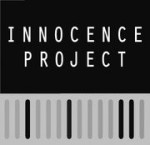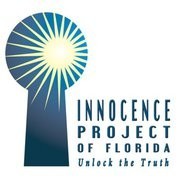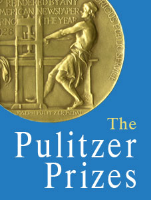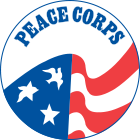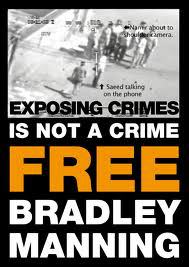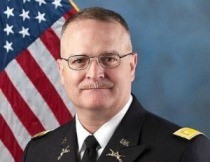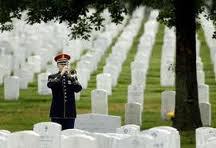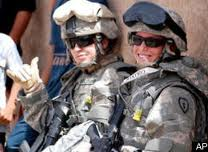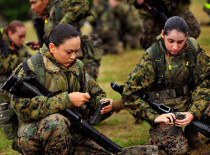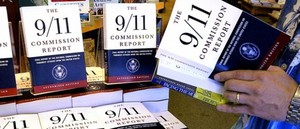Revival of white supremacy racism in Florida & America
.....Dylann Roof: White supremacy racism in America.....
Charleston church shooting
Wikipedia
On the evening of June 17, 2015, a mass shooting took place at Emanuel African Methodist Episcopal Church in downtown Charleston, South Carolina, United States. The church is one of the United States' oldest black churches and has long been a site for community organization around civil rights. Nine people were killed, including the senior pastor, Clementa C. Pinckney, a state senator. A tenth victim was also shot, but survived.
Police arrested a white suspect, later identified as 21-year-old Dylann Roof, in Shelby, North Carolina, the morning after the attack. The United States Department of Justice is investigating the possibility that the shooting was a hate crime or an act of domestic terrorism, among other scenarios. Roof has been charged with nine counts of murder by the State of South Carolina. Read more
........Dylann Roof murdered nine African-Americans.......
Nine African-Americans were murdered on June 17, 2015
by Dylann Roof: "I have to do it. You rape our women and you're taking over our country. And you have to go."
- Cynthia Marie Graham Hurd (54) – Bible study member and manager for the Charleston County Public Library system; sister of Malcolm Graham
- Susie Jackson (87) – a Bible study and church choir member
- Ethel Lee Lance (70) – the church sexton
- Depayne Middleton-Doctor (49) – a pastor who was also employed as a school administrator and admissions coordinator at Southern Wesleyan University
- Clementa C. Pinckney (41) – the church pastor and a South Carolina state senator
- Tywanza Sanders (26) – a Bible study member; nephew of Susie Jackson
- Daniel Simmons (74) – a pastor who also served at Greater Zion AME Church in Awendaw
- Sharonda Coleman-Singleton (45) a pastor; also a speech therapist and track coach at Goose Creek High School
- Myra Thompson (59) – a Bible study teacher
DOJ website link: Attorney General Lynch's Statement Following the Federal Grand Jury Indictment Against Dylann Storm Roof
Jury sentences Dylann Roof to death for
Charleston church massacre
Jury sentences Dylann Roof to death for Charleston church massacre
ABA Journal Daily News
By Lorelei Laird
Posted Jan 10, 2017 05:25 pm CST
A South Carolina jury sentenced mass shooter Dylann Roof to death late Tuesday, the Post and Courier reported.
Roof, 22, killed nine people at a Bible study meeting at the Emanuel African Methodist Episcopal Church in June of 2015. Shortly after he was taken into custody, he confessed to law enforcement and said he committed the murders to start a race war, CNN reported at the time. All of the victims were African-American; Roof is white. A manifesto he posted on his personal website expressed nakedly racist views, and law enforcement reported that he continued his racist writings from prison.
Assistant U.S. Attorney Jay Richardson argued in court Tuesday that Roof coldly and carefully planned the killings, visiting Charleston several times, stockpiling ammunition and deliberately bringing exactly 88 bullets, a white supremacist convention that invokes H, the eighth letter of the alphabet, as a way to say "Heil Hitler."
Roof, who represented himself despite the advice of U.S. District Judge Richard Gergel, said in his closing arguments that he doesn’t hate black people; rather, he said, he hates what they do. He also said he felt he had to commit the murders, and still feels that way.
He told the jury that he’d been told he has a right to ask for a life sentence rather than death, but "I’m not sure what good that will do anyway."
After the verdict, Roof asked Gergel for new lawyers to file a request for a new trial. A standby team of defense lawyers for Roof had been in attendance throughout the trial despite Roof’s insistence on representing himself. Those attorneys had attempted to introduce evidence suggesting Roof was mentally ill; Roof’s opening statement was largely an attempt to convince jurors he’s not mentally ill, the Post and Courier said.
Gergel said he’d be "strongly disinclined" to replace that team, but would be willing to listen to motions Wednesday.
Roof killed Emanuel AME Pastor Clementa Pinckney, 41, who was also a state senator; Cynthia Hurd, 54; Susie Jackson, 87; Ethel Lance, 70; DePayne Middleton-Doctor, 49; Tywanza Sanders, 26; Daniel Simmons Sr., 74; Sharonda Coleman Singleton, 45; and Myra Thompson, 59. Several other people survived the shooting, including a grandmother and granddaughter who survived by playing dead and a woman who Roof said he would allow to live so she could tell the story.
Families of the victims packed the courtroom Tuesday, the Post and Courier reported, but Roof’s family was not present. Read more
US to seek death penalty in hate-crimes case against accused Charleston church shooter, Dylann Roof
ABA Journal Daily News
By Martha Neil
May 24, 2016
(left) Dylann Roof. Photo from the Charleston County Sheriff's Office
Attorney General Loretta Lynch announced Tuesday that the United States will seek the death penalty in its hate-crimes case against Dylann Roof, the 22-year-old white man accused of gunning down nine people in a Bible study group at a historic black church in Charleston, South Carolina, last year.
Roof faces 33 federal charges. He is accused of targeting the church’s pastor and parishioners for death because of their race and of interfering with their right to freely practice their religion, according to the Post and Courier.
Factors weighing in favor of seeking the ultimate penalty, if Roof is convicted, include but are not limited to extensive premeditation, targeting individuals over 70 years old, the race-based nature of the crimes and his lack of remorse, said assistant U.S. Attorney Jay Richardson in an apparent court filing on Tuesday.
"The families will support this decision," attorney Steve Schmutz, who represents families of several victims, told the newspaper. "Really, I think the families have mixed emotions about the death penalty. But if it’s ever going to be given, this case certainly calls for it."
Roof also faces a separate state court murder case in which the death penalty is being sought, the newspaper notes.
A trial is scheduled in January in the state court murder case but no trial date has yet been set in the federal hate crimes case.
Confronting racism face-to-face - BBC News Published May 17, 2014 YouTube
Mo Asumang, daughter of a black Ghanaian father and a white German mother, talks to BBC News about her experiences making her new documentary, The Aryans, in which she confronts racists, both in Germany and among the Ku Klux Klan in America. Link to Facebook Link to Wikipedia (German) Link to BBC News
Dylann Roof, the Charleston Murders, and Hate in the Mainstream. The Council of Conservative Citizens, a white supremacist group cited by the accused Charleston killer, has a long history of associations with mainstream politicians who’ve given the group legitimacy, by J. Richard Cohen, SPLC President.
Much has been made of news reports showing that the head of the Council of Conservative Citizens (CCC) - the racist group whose website helped radicalize the suspect in the Charleston church massacre - has donated $65,000 to Republican candidates, including presidential aspirants Ted Cruz, Rand Paul and Rick Santorum. But far more damning has been the support the GOP has given to the CCC over the years.
Despite the group’s obvious racism, its mainstream political connections run deep. And they’re not entirely a thing of the past. The white nationalist Kyle Rogers, who operates the CCC website, was a member of the GOP executive committee in Dorchester County, South Carolina, as recently as 2013. Read more
- Southern Poverty Law Center Twitter
- Southern Poverty Law Center Facebook Florida
- Southern Poverty Law Center Facebook photo stream
- Southern Poverty Law Center Hate Map Florida
- Southern Poverty Law Center Ku Klux Klan Extremist Files
.........FDLE: 2 Fruitland Park police officers in KKK..........
FRUITLAND PARK -- Two officers with the Fruitland Park Police Department are off the job after an investigation linked them to the Ku Klux Klan. An investigation by the FBI named Deputy Chief David Borst and Cpl. George Hunnewell as members of the Klan.
Borst resigned, and Hunnewell was terminated Friday following a brief internal investigation, Fruitland Park Police Chief Terry Isaacs said. Hunnewell had been demoted from corporal in 2013 for five write-ups for conduct, attitude, performance and timeless, Isaacs said. The Florida Department of Law Enforcement presented an investigative summary from an FBI source to Isaacs on Wednesday, stating the officers were associated with a "subversive organization."
The investigation found no criminal wrongdoings.
"We are here, we are in place, and I want the public to know this type of conduct will not even be remotely tolerated," Isaacs said.
Isaacs said he plans to interview every police officer within the department and ask them about potential ties to subversive groups, which are against department policy.
Every case that Borst and Hunnewell worked will now be turned over for review by the State Attorney's Office, Isaacs said. more
Southern Poverty Law Center Active Ku Klux Klan Groups
_________________________________________________________
Florida Police Outed As KKK Members
Reported by Kyle Kulinski of Secular Talk. Published
July 14, 2014
Revival of white supremacy racism in Florida & America
KKK-linked Florida prison guards charged in murder plot
Miami Herald
By Carol Marbin Miller
And Mary Ellen Klas
April 2, 2015
Thomas Jordan Driver wanted to kill somebody in the worst way, authorities say.
He loaded insulin into syringes and planned to inject his target with the potentially lethal drug, then leave the man face-down in a river next to a fishing pole, to make it look like an accident. He considered shooting his victim and chopping up the body. But his first choice was to "stomp" the man’s throat and kick "his teeth out."
Driver, a Florida prison guard until Thursday, is getting a taste of life on the other side of the bars. Driver and two buddies — all of whom prosecutors say belonged to an offshoot of the Ku Klux Klan, were charged with plotting to kill a former inmate at a North Florida prison.
Driver, 25, David Elliot Moran, 47, who goes by the name "Sarge," and Charles Thomas Newcomb, identified as "Exalted Cyclops" of the Traditionalist American Knights of the Ku Klux Klan, each face one charge of conspiracy to commit murder. If convicted, they could get a maximum sentence of 30 years imprisonment. Read more
- KKK-linked Florida prison guards charged in murder plot, April 3, 2015, Ed Payne, CNN
- Klan members who worked for state prisons plotted murder, Bondi says, April 2, 2015, Orlando Sentinel
Revival of white supremacy racism in Florida & America
White supremacy
Wikipedia
White supremacy or white supremacism is a form of racism centered upon the belief, and promotion of the belief, that white people are superior in certain characteristics, traits, and attributes to people of other racial backgrounds and that therefore whites should politically, economically and socially rule non-whites. The term is also typically used to describe a political ideology that perpetuates and maintains the social, political, historical and/or industrial domination by white people (as evidenced by historical and contemporary sociopolitical structures like the Atlantic Slave Trade, colonization of the Global South, Jim Crow laws in the United States, and miscegenation laws in settler colonies and former settler colonies like the United States, South Africa, Australia, and Madagascar, for example).[1] Different forms of white supremacism put forth different conceptions of who is considered white, and different white supremacists identify various racial and cultural groups as their primary enemy.[2]
In academic usage, the term "white supremacy" can also refer to a system where whites enjoy a structural advantage (privilege) over other ethnic groups, both at a collective and an individual level (ceteris paribus, i. e., when individuals are compared that do not relevantly differ except in ethnicity). Read more
____________________________________________________
2 Fruitland Park Cops Exposed By FBI As Members Of The KKK
Reported by Philip of TheAdviseShowTV Published July 14, 2014
Harry Tyson Moore (November 18, 1905 – December 25, 1951) was an African-American teacher, founder of the first branch of the National Association for the Advancement of Colored People (NAACP) in Brevard County, Florida, and a pioneer leader of the civil rights movement in Florida and the southern United States.
Harry T. Moore and his wife, Harriette Vyda Simms Moore, also a teacher, were killed in a bombing of their home on Christmas night 1951. Forensic work in 2005-6 resulted in the naming of the probable perpetrators as four Ku Klux Klan members, all long dead by the time of the investigation.[1] The Moores were the first NAACP members to be murdered for civil rights activism; Moore has been called the first martyr of the early stage of the African-American Civil Rights Movement (1896–1954). Wikipedia
Neo-Confederate is a term used by some to describe the views of various groups and individuals who portray the Confederate States of America and its actions in the American Civil War in a positive light. See also: Lost Cause of the Confederacy.
Nathan Bedford Forrest (1821-1877) a lieutenant general in the Confederate Army during the American Civil War...served as the first Grand Wizard of the Ku Klux Klan...Forrest was accused of war crimes at the Battle of Fort Pillow for allowing forces under his command to massacre hundreds of black Union Army and white Southern Unionist prisoners...Wikipedia
Lethal Punishment: The End of Lynching in Marion County, Florida by Margaret Vandiver. Chapter Five. “The First Time a Charge Like This Has Ever Been Tried in the Courts” pp. 70-88. Excerpts below from page 70 and page 72 respectively:
"Between 1885 and 1930, nineteen black men were lynched in Marion County, nine of them for sexual offenses. Marion County lynchings were public affairs, often carried out before hundreds of witnesses, but none of the perpetrators was prosecuted."
"Marion County mobs sometimes left a placard or a sign attached to the body of the victim; when Robert Larkin was lynched in 1893, the mob left a placard reading, "Done by 300 of the best citizens of this county."
19 Confirmed Lynchings in Marion County, Florida, 1885-1932, from Appendix B, page 196.
1. Caesar Carooth, black male - lynched July 3, 1885
2. George Green, black male - lynched Dec. 12, 1887
3. Robert Larkin, black male - lynched July 12, 1893
4. Nero Young, black male - lynched May 15, 1894
5. William Jackson, black male - lynched Dec. 1, 1894
6. William Jones, black male - lynched Dec. 15, 1894
7. James Gilmore, black male - lynched March 15, 1897
8. James Miley, black male - lynched March 15, 1897
9. Ed Holmes, black male - lynched March 15, 1897
10. Otis Miller, black male - lynched March 16, 1897
11. Robert Alexander, black male - lynched June 9, 1899
12. Norman McKinney, black male - lynched Jan. 16, 1901
13. Preece Niles, black male - lynched Nov. 14, 1912
14. John Archie, black male - lynched Nov. 19, 1912
15. John Richards, black male - lynched February 17, 1915
16. Joseph Nimrod, black male - lynched Dec. 29, 1915
17. Richard Anderson, black male - lynched Jan. 28, 1916
18. Elijah Jones, black male - lynched Feb. 12, 1921
19. Chandler Colding, black male - lynched Jan. 11, 1926
Marion County Florida BOCC-Confederate Propaganda
- Proclamation of Confederate History Month Marion County Florida BOCC - Confederate propaganda, not history.
- Marion County Florida Civil War statue account $207,497
- County prepares to move Confederate monument
- Confederate statue's new home: veterans park
- Florida Public Archeology Network statue images
Inscription on Johnny Reb, the Marion County Confederate Soldier Statue:
- The South Reveres Her Washington, Jefferson, Madison, Monroe, Andrew Jackson, And Others, Who Laid The Foundations Of Our Grand Republic. She Honors Her Lee, Stonewall Jackson, Stuart, Johnson, Forest, And Every Brave Son Who Fought To Preserve Our Liberties, Guaranteed By The Fathers, Under The Constitution.
No mention of Abraham Lincoln, et al., just the slave-owning U.S. presidents: One in four U.S. presidents were slaveholders: 12 owned slaves at some point in their lives. Tellingly, 8 presidents owned slaves while living in the White House. Also noteworthy is Nathan Bedford Forrest a Confederate lieutenant general during the American Civil War...who served as the first Grand Wizard of the Ku Klux Klan...Forrest was accused of war crimes at the Battle of Fort Pillow. The Constitution described on the Confederate statue means the original Constitution of 1789 that permitted slavery, not the U.S. Constitution and Thirteenth Amendment (1865), Fourteenth Amendment (1868), and Fifteenth Amendment (1870) in place when the statue was erected in 1908.
_________________________________________
The Gettysburg Address and equality, rejected by Marion County.
"Four score and seven years ago our fathers brought forth...a new nation, conceived in Liberty, and dedicated to the proposition that all men are created equal... Now we are engaged in a great civil war, testing whether that nation... can... endure...we here highly resolve...that this nation shall have a new birth of freedom; and that this government of the people, by the people, for the people, shall not perish from the earth." - Abraham Lincoln
Military Order Of The Stars and Bars, Florida.
Marion County, Marion Dragoons #164
Newsletter Winter 2013, page 8, "Lord, we give thanks to you for the blessing of being able to honor our ancestors who gave their all to protect us, defend our honor and uphold the original intent of our Constitution. (Slavery in the United States)
mosbflstainlessbannerwinter2013.pdf
Adobe Acrobat document [2.0 MB]
Was the Civil War about Slavery Colonel [...]
Adobe Acrobat document [113.1 KB]
Gov. McDonnell apologizes for omitting slavery in Confederacy proclamation
(CNN) -- Virginia Gov. Bob McDonnell apologized Wednesday for leaving out any reference to slavery in his recent proclamation designating April as Confederate History Month, calling it a "major omission."
"The failure to include any reference to slavery was a mistake, and for that I apologize to any fellow Virginian who has been offended or disappointed," McDonnell said in a written statement.
"The abomination of slavery divided our nation, deprived people of their God-given inalienable rights, and led to the Civil War," the statement said. "Slavery was an evil, vicious and inhumane practice which degraded human beings to property, and it has left a stain on the soul of this state and nation."
McDonnell also announced Wednesday that he would add language about slavery to the proclamation.
"(I)t is important for all Virginians to understand that the institution of slavery led to this (Civil) war and was an evil and inhumane practice that deprived people of their God-given inalienable rights," the new language says, "and all Virginians are thankful for its permanent eradication from our borders." Read more
___________________________________________________________
.....................Lynching in the United States...........................
Without Sanctuary:
Lynching Photography in America
James Allen, Author
These images make the past present. They refute the notion that photographs of charged historical subjects lose their power, softening and becoming increasingly aesthetic
with time. These images are not going softly into any artistic realm. Instead they send shock waves through the brain, implicating ever larger chunks of American society and in many ways reaching up
to the present. They give one a deeper and far sadder understanding of what it has meant to be white and to be black in America. And what it still means. -- New York Times. Read more
Strange Fruit Wikipedia
Abel Meeropol NPR
"Strange Fruit" is a song performed most famously by Billie Holiday, who first sang and recorded it in 1939. Written by teacher Abel Meeropol as a poem and published in 1937, it protested American racism, particularly the lynching of African Americans. Such lynchings had reached a peak in the South at the turn of the century, but continued there and in other regions of the United States.[2][3] Meeropol set it to music and, with his wife and the singer Laura Duncan, performed it as a protest song in New York venues in the late 1930s, including Madison Square Garden.
The song continues to be covered by numerous artists, as well as inspiring novels, other poems and other creative works. In 1978, Holiday's version of the song was inducted into the Grammy Hall of Fame.[4] It was also included in the list of Songs of the Century, by the Recording Industry of America and the National Endowment for the Arts. Read more
Florida Lynched More Black People Per Capita Than Any Other State
Broward Palm Beach New Times, February 11, 2015
"Reuben Stacy, a 37-year-old black man, hangs from a tree on Old Davie Road in Fort Lauderdale, blood trickling down his body and dripping off his toes. Behind him, a white girl, about 7 years old, looks on, a strange smile on her face as she takes in the sight of the "strange fruit" her elders had just created that hot day in July 1935."
Lynchings in Florida? It was a problem here, too
The Gainesville Sun, Gainesville.com, September 3, 2005
Marion County led Florida in the number of lynchings, according to University of Florida professor Jack Davis is a scholar of race relations in the South.
____________________________________________________
Lynching in America: Confronting the Legacy of Racial Terror
Lynching in America: Confronting the Legacy of Racial Terror
Equal Justice Initiative
122 Commerce Street
Montgomery, Alabama 36104
Bryan Stevenson, Founder
And Executive Director
Lynching in America: Confronting the Legacy of Racial Terror documents EJI’s multi-year investigation into lynching in twelve Southern states during the period between Reconstruction and World War II. EJI researchers documented 3959 racial terror lynchings of African Americans in Alabama, Arkansas, Florida, Georgia, Kentucky, Louisiana, Mississippi, North Carolina, South Carolina, Tennessee, Texas, and Virginia between 1877 and 1950 – at least 700 more lynchings of black people in these states than previously reported in the most comprehensive work done on lynching to date. Read more
EJI Reports: Lynching in America: Confronting the Legacy of Racial Terror. New York Times: History of Lynchings in the South Documents Nearly 4,000 Names. EJI Reports - Lynchings of African Americans by County. (18 lynchings in Marion County, Florida)
...............Slavery in the United States of America................
150 Years After Fort Sumter: Why We're Still Fighting the Civil War
Time Magazine
By David Von Drehle
April 7, 2011
North and South shared the burden of slavery, and after the war, they shared in forgetting about it. But 150 years later, it's time to tell the truth
A few weeks before Captain George S. James sent the first mortar round arcing through the predawn darkness toward Fort Sumter, South Carolina, on April 12, 1861, Abraham Lincoln cast his Inaugural Address as a last-ditch effort to win back the South. A single thorny issue divided the nation, he declared: "One section of our country believes slavery is right and ought to be extended, while the other believes it is wrong and ought not to be extended. This is the only substantial dispute."
It was not a controversial statement at the time. Indeed, Southern leaders were saying similar things during those fateful days. But 150 years later, Americans have lost that clarity about the cause of the Civil War, the most traumatic and transformational event in U.S. history, which left more than 625,000 dead — more Americans killed than in both world wars combined. Read more
_______________________________________________________________
Fourth of July 1776, 1964, 2010
By FRANK RICH
New York Times Op-Ed Columnist
July 2, 2010
ALL men may be created equal, but slavery, America’s original sin of inequality, was left unaddressed in the Declaration of Independence signed 234 years ago today. Of all the countless attempts to
dispel that shadow over the nation’s birth, few were more ambitious than the hard-fought bill Lyndon B. Johnson signed into law just in time for another Fourth of July, 46 summers ago. Read more
_________________________________________________________
All men are created equal?
The Dark Side of Thomas Jefferson - Smithsonian.com
Thomas Jefferson and Sally Hemings: A Brief Account Monticello.Org
Thomas Jefferson fathered six children by his slave Sally Hemings mentioned in Jefferson's records, including Beverly, Harriet, Madison, and Eston Hemings. Read more
Wikipedia
The quotation "All men are created equal" has been called an "immortal declaration", and "perhaps [the] single phrase" of the American Revolutionary period with the greatest "continuing importance".[1][2] Thomas Jefferson first used the phrase in the U.S. Declaration of Independence...The second paragraph of the United States Declaration of Independence starts as follows:
We hold these truths to be self-evident, that all men are created equal, that they are endowed by their Creator with certain unalienable Rights, that among these are Life, Liberty and the Pursuit of Happiness. That to secure these rights, Governments are instituted among Men, deriving their just powers from the consent of the governed;[7]
________________________________________________
Hypocrisy of American Slavery
The contradiction between the claim that "all men are created equal" and the existence of American slavery attracted comment when the Declaration of Independence was first published. Before final approval, Congress, having made a few alterations to some of the wording, also deleted nearly a fourth of the draft, including a passage critical of the slave trade. At that time many members of Congress, including Jefferson, owned slaves, which clearly factored into their decision to delete the controversial "anti-slavery" passage.[13] In 1776, abolitionist Thomas Day responding to the hypocrisy in the Declaration wrote, though the first draft stated " All free men are created equal": Wikipedia
If there be an object truly ridiculous in nature, it is an American patriot, signing resolutions of independency with the one hand, and with the other brandishing a whip over his affrighted slaves.[13]
___________________________________________________________
‘History of the Slave South’ Online Course by Stephanie McCurry. For reference only. The course has ended. YouTube video.
__________________________________________________________________
- Who Won the Civil War? New York Times, July 2, 2013
- Book TV: Stephanie McCurry, "Confederate Reckoning"
- Professor Stephanie McCurry, Confederate Reckoning
- But There Was No Peace: The Aftermath of the Civil War
- The Rise and Fall of Jim Crow, Public Broadcasting Service
- Michelle Alexander, author of "The New Jim Crow"
_____________________________________________________
Which U.S. Presidents Owned Slaves? (12 white men)
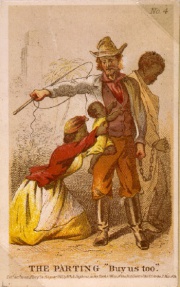 THE PARTING "Buy us too", by Henry Louis Stephens, family is in the process of being separated at a slave auction. (Library of Congress)
THE PARTING "Buy us too", by Henry Louis Stephens, family is in the process of being separated at a slave auction. (Library of Congress)
Grand Valley State University
How many of our presidents
owned slaves?
There are two ways of interpreting your question. Either: How many presidents owned slaves at some point in their lives? Or: How many presidents owned slaves while serving as chief executive? Many books get the answers to these questions wrong, and when I speak on the presidents and ask these two questions, audiences invariably low-ball the answer to both.
It comes as a shock to most Americans’ sensibilities that more than one in four U.S. presidents were slaveholder: 12 owned slaves at some point in their lives. Significantly, 8 presidents owned slaves while living in the Executive Mansion. Put another way, for 50 of the first 60 years of the new republic, the president was a slaveholder.
Following is the number of slaves each of the 12 slaveholding presidents owned. (CAPS indicate the president owned slaves while serving as the chief executive):[1]
GEORGE WASHINGTON (between 250-350 slaves)
THOMAS JEFFERSON (about 200)
JAMES MADISON (more than 100)
JAMES MONROE (about 75)
ANDREW JACKSON (fewer than 200)
Martin Van Buren (one)
William Henry Harrison (eleven)
JOHN TYLER (about 70)
JAMES POLK (about 25)
ZACHARY TAYLOR (fewer than 150)
Andrew Johnson (probably eight)
Ulysses S. Grant (probably five)
A number of presidents benefited electorally from "the peculiar institution," especially the four earliest presidents from the then-largest slave state, Virginia. To understand why, one must go back to the Constitutional Convention of 1787, when Southern delegates argued that black slaves should be counted as complete persons, while Northern delegates didn’t want them counted at all since they were not citizens and couldn’t vote. To get over this hurdle and create a unified nation (their highest priority), the delegates decided to negotiate: the North proposed counting black slaves as half a person, and the South countered with three-quarters, so they compromised at three-fifths.
The "three-fifths" clause in the Constitution (Article I, section 2) was all about determining a state’s representation in Congress. That meant southern states collectively gained an advantage that often provided the margin of victory in close elections. In his book Negro President, Garry Wills points out that the slave states always had one-third more seats in Congress than their free population justified. This was decisive in the Election of 1800 in which Thomas Jefferson beat out northern rivals John Adams and Aaron Burr in the House of Representatives
Also, three key Southerners – George Washington, Thomas Jefferson, and James Madison – finagled locating the national capital, Washington, DC, in slave territory. The capital started out in New York City, in a free state, then moved to Philadelphia. But in Philadelphia a slave-owner could only keep a slave for six months before freeing him, unless he was temporarily sent into slave territory, which was inconvenient to the owner. So the founders set aside land around a slave town, Alexandria, Virginia, to serve as the capital of the new nation.
It’s a commonplace that Abraham Lincoln never trafficked in slaves, much less owned them – indeed, he "freed the slaves." But here’s the shocker: Although the slave trade had been abolished in the District of Columbia in 1850, slaves inhabited the capital for another 15 years – till the end of the Civil War. Dwell on that thought: Lincoln fought the Civil War in a slave city – the Great Emancipator inhabited a White House staffed by slaves. more
____________________________________________________________________
When George Washington died, the Mount Vernon estate’s enslaved population consisted of 318 people. Learn more about George Washington and the enslaved population at Mount Vernon.
George Washington, Slave Catcher, New York Times
By Erica Armstrong Dunbar, February 16, 2015
The Monster of Monticello, New York Times
By Paul Finkelman November 30, 2012
___________________________________________________________________
Slavery and Racism Underlie the American Civil War
TeachingAmericanHistory.org
by Alexander H. Stephens
If there is any doubt that slavery was the cause of the Cvil War, read the "Corner Stone" Speech by Alexander H. Stephens, Vice President of the Confederate States of America, Savannah, Georgia, Mar-21-1861:
"Our new government is founded upon exactly the opposite idea; its foundations are laid, its corner- stone rests, upon the great truth that the negro is not equal to the white man; that slavery subordination to the superior race is his natural and normal condition."
__________________________________________________
Richard R. Wright, Jr., born into slavery, Wharton School Alum
Richard Robert Wright Sr., WEv'21
Educator, Banker, Civil Rights Leader
Born into slavery, Wharton Evening School Alum Richard Robert Wright, Sr., successfully managed his bank through the Great Depression.
Wright was born into slavery on May 16, 1855, in a log cabin six miles from Dalton, Georgia, Wikipedia
In 1876, Wright was named valedictorian at Atlanta University’s first commencement ceremony. He would study at a number of other institutions over his lifetime including Harvard, Columbia, the University of Chicago, Oxford University, and the University of Pennsylvania. BlackPast.org
Wright was named one of the Wharton School's 125 influential alumni and faculty in this special Wharton Alumni Magazine.
__________________________________________________________
Confronting Slavery and Revealing the "Lost Cause"
Confronting Slavery and Revealing the "Lost Cause", National Park
Service
By James Oliver Horton, Professor Emeritus, George Washington University
One of the most sensitive and controversial issues that any Civil War site interpreter will confront is the role of slavery in the South's decision to secede from and take up arms against the United States. Although an argument that slavery played an important role in the coming of the Civil War would raise few eyebrows among academic scholars, for public historians faced with a popular audience unfamiliar with the latest scholarship on the subject such an assertion can be very controversial. Whenever I speak to groups about the Civil War, I am reminded that slavery and the war are often separated in the public mind.
As historian James McPherson explained in a recent article, it is especially difficult for southern whites "to admit - that the noble Cause for which their ancestors fought might have included the defense of slavery." Yet, the best historical scholars over the last generation or more have argued convincingly for the centrality of slavery among the causes of the Civil War. Read more
Also see: Are you a proud descendant of a Confederate soldier?
The Rotten Core of the Lost Cause
By Ed Kilgore, Washington Monthly
"the very ideologies of white supremacy and state’s rights that make the Confederacy possible ultimately destroyed it from within"
________________________________________________
By Colin Woodard, Washington Monthly
How the ideology of white supremacy
undermined the South’s own war effort.
"A war launched to preserve slavery succeeded instead in abolishing that institution more rapidly and more radically than would have occurred otherwise," Levine writes. "[The] ideology of white supremacy, which had always provided critical support for slavery, inhibit[ed] the slaveholders’ government from doing what it needed to do to survive."
The Enduring Legacy of the South's
Civil War Victory
Race Matters.org
By David Brion David
August 26, 2001
THE United States is only now beginning to recover from the Confederacy's ideological victory following the Civil War. Though the South lost the battles, for more than a century it attained its goal: that the role of slavery in America's history be thoroughly diminished, even somehow removed as a cause of the war. The reconciliation of North and South required a national repudiation of Reconstruction as "a disastrous mistake"; a wide-ranging white acceptance of "Negro inferiority" and of white supremacy in the South; and a distorted view of slavery as an unfortunate but benign institution that was damaging for whites morally but helped civilize and Christianize "African savages."
The current national debate about slavery and its role in American history is finally forcing not only a discussion of reparations, but, more important, a re- examination of the long-accepted message conveyed by respected white scholars whose textbooks on slavery, the Civil War and Reconstruction were still being assigned to college students in the 1950's and even later. It was the message reinforced at countless Memorial Day celebrations, where white Union and Confederate veterans shook hands and recalled their collective heroism, while survivors of the 200,000 black Union soldiers and sailors crucial in helping win the war were not welcome. It was the message bestowed on the white veterans by Woodrow Wilson, the first Southerner elected president after the Civil War, during the huge 50th reunion at Gettysburg in 1913.
Consider that Wilson's most beloved film was the popular "The Birth of a Nation," of 1915, which glorified the Ku Klux Klan and depicted freed male slaves as beasts lusting after white women; and that the later big commercial success about the South was the 1936 novel and 1939 film "Gone With the Wind," which romanticized the region as a victim of an unjust war. (Of course, the relatively few black historians had a different view.) Read more
David Brion Davis is the director of the Gilder Lehrman Center for the Study of Slavery, Resistance and Abolition at Yale University.
___________________________________________________________
Equal Justice Initiative
122 Commerce Street
Montgomery, Alabama 36104
And Executive Director
Beginning in the seventeenth century, millions of African people were kidnapped, enslaved, and shipped across the Atlantic to the Americas under horrific conditions. Nearly two million people died at sea during the agonizing journey. For the next two centuries, the enslavement of black people in the United States created wealth, opportunity, and prosperity for millions of Americans. As American slavery evolved, an elaborate and enduring mythology about the inferiority of black people was created to legitimate, perpetuate, and defend slavery. This mythology survived slavery’s formal abolition following the Civil War. Read more
EJI Report: Slavery in America: The Montgomery Slave Trade
Before the Battles and the Protests, the Chains
The New York Times, By Campbell Robertson, Dec-09-2013
The Slave Trader - History's Most Ignoble Trade? Son of the South
Slave traders were those who fitted ships, sailed to the Slavery Coast of Africa, and procured men, women, and children to bring back to be sold as enslaved laborers. This was an expensive endeavor, and the Slave Traders were often backed by the Rich and Powerful. In many cases, Slave Traders themselves were made rich by their work.
Under any conditions, this work would be detestable, but the outrage was multiplied by the complete inhumanity with which they pursued their chosen profession. The conditions on the slave ships were reprehensible, with people packed so closely they could not even lie down.
It is against this backdrop that we present the following story. It is an engraving and article from the March 8, 1862 edition of Harper's Weekly. The story describes one of the most notorious of the Slave Traders - Nathaniel Gordon. The story describes Mr. Gordon's capture, trial, and execution. Make note of the detailed description of the conditions on Mr. Gordon's ship, and the abject misery of his "passengers".
Of particular interest is Mr. Gordon's last few hours of life. He was unrepentant to the end. His last few hours were agonizing and miserable, as he prepared to face his ultimate judgment for a life of greed and brutality.
- THE EXECUTION OF GORDON, THE SLAVE-TRADER.
- Harper's Weekly, March 8, 1862, Read more
Thirteen/WNET New York. PBS. 2004 Educational Broadcasting Corporation.
SLAVERY AND THE MAKING OF AMERICA is a four-part series documenting the history of American slavery from its beginnings in the British colonies to its end in the Southern states and the years of post-Civil War Reconstruction. Drawing on a wealth of recent scholarship, it looks at slavery as an integral part of a developing nation, challenging the long held notion that slavery was exclusively a Southern enterprise. At the same time, by focusing on the remarkable stories of individual slaves, it offers new perspectives on the slave experience and testifies to the active role that Africans and African Americans took in surviving their bondage and shaping their own lives. Read more
Harpers Ferry Raid 1859 - BlackPast.org
John Brown - Harpers Ferry
National Park Service
On October 16, 17, and 18, 1859, John Brown and his "Provisional Army of the United States" took possession of the United States Armory and Arsenal at Harpers Ferry.
Brown had come to arm an uprising of slaves. Instead, the raid drew militia companies and federal troops from Maryland, Virginia, and the District of Columbia. On the morning of October 18, a
storming party of 12 Marines broke down the door of the Armory's fire enginehouse, taking Brown and the remaining raiders captive.
Brown, charged for "conspiring with slaves to commit treason and murder," was tried, convicted, and hanged in Charles Town on December 2, 1859. Before the sentence was
carried out, however, Brown issued a prophetic warning:
I wish to say furthermore, that you had better – all you people at the South – prepare yourselves for a settlement of that question that must come up for settlement
sooner than you are prepared for it. The sooner you are prepared the better. You may dispose of me very easily; I am nearly disposed of now; but this question is still to be settled – this negro
question I mean – the end of that is not yet. Read more
_________________________________________
The Last Moments of John Brown's Life
The Last Moments of John Brown, by Thomas Hovenden
On the day of his death he wrote "I, John Brown, am now quite certain that the
crimes of this guilty land will never be purged away but with blood. I had, as I now think, vainly flattered myself that without very much bloodshed it might be done."
"The Battle Hymn of the Republic" (Wikipedia), also known as "Mine Eyes Have Seen the Glory" outside of the United States, is a song by American writer Julia Ward Howe using the music from the song "John Brown's Body". Howe's more famous lyrics were written in November 1861, and first published in The Atlantic Monthly in February 1862. The song links the judgment of the wicked at the end of time (New Testament, Rev. 19) with the American Civil War. Since that time, it has become an extremely popular and well-known American patriotic song. Read more
Odetta - Battle Hymn Of The Republic (YouTube link)
The 4th United States Colored Infantry Regiment was an African American unit of the Union Army during the American Civil War.
Mr. Lincoln and Freedom
Black Soldiers
Historian John Hope Franklin (Wikipedia) wrote that at the beginning of the Civil War : "When Negroes rushed to offer their services to the Union, they were rejected. In almost every town of any size there were large numbers of Negroes who sought service in the Union army; failing to be enlisted they bided their time and did whatever they could to assist."1
Historian Susan-Mary Grant wrote "that when hostilities commenced between North and South in 1861 blacks throughout the North, and some in the South too, sought to enlist. However, free blacks in the North who sought to respond to Abraham Lincoln's call for 75,000 volunteers found that their services were not required by a North in which slavery had been abolished but racist assumptions still prevailed. Instead they were told quite firmly that the war was a 'white man's fight' and offered no role for them. The notable northern black leader, Frederick Douglass, himself an escaped slave, summed the matter up succinctly:"2
Colored men were good enough to fight under Washington. They are not good enough to fight under McClellan. They were good enough to fight under Andrew Jackson. They are not good enough to fight under Gen. Halleck. They were good enough to help win American Independence but they are not good enough to help preserve that independence against treason and rebellion. They were good enough to defend New Orleans but not good enough to defend our poor beleaguered Capital.3
The move to reverse that military deficiency came slowly – moving into full gear only in the spring of 1863.
Historian Benjamin P. Thomas wrote: "Although Lincoln announced the proposed use of colored troops in the Emancipation Proclamation, he had not come easily to that decision. The act of July 17, 1862 gave him complete discretion in the employment of Negroes for any purpose whatsoever, but he had shrunk from using black men to kill white men. To deprive the South of the services of her slaves was a legitimate and necessary war measure. To use colored men as teamsters and laborers in the Union army would release white men for combat. But to put weapons in the hands of black men, some of whom might become frenzied with the flush of new-found freedom, was a matter of most serious consequence."4 Read more
Black soldier's letter offers rare view of Civil War
USA Today, By Diana Penner
The Indianapolis Star
March 5, 2013
Missive detailing soldier's thoughts on war, racial equality could fetch up to $8,000 at New York auction.
INDIANAPOLIS -- John Carter, a prosperous African-American grocery store owner in Madison, Ind., before and after the Civil War, was active on the Underground Railroad, secretly ferrying slaves from the South to freedom in the North.
For more than a century, a letter written Dec. 3, 1864, by his son, Morgan W. Carter, detailing a bloody Civil War battle and outlining a vision of free blacks, also was underground.
The letter, long in the hands of private collectors and out of public view, is set to go up for auction March 21 at Swann Galleries in New York....
...Writing about one battle, Carter described "the long to be remembered field of bloodshed and slaughter. ... There many a poor fell(ow) lost thear life for thear country and thear people." Read the full transcript of Carter's letter here or below in PDF.
Letter of Sgt. Morgan W. Carter, Company[...]
Adobe Acrobat document [241.8 KB]
Wikipedia
The United States Colored Troops (USCT) were regiments in the United States Army composed of African-American (colored) soldiers; they were first recruited during the American Civil War, and by the end of that war in April, 1865, the 175 USCT regiments constituted about one-tenth the manpower of the Union Army.
In the decades that followed the USCT soldiers fought in the Indian Wars in the American West, where they became known as the Buffalo Soldiers; they received the nickname from Native Americans who compared their hair to the fur of bison. Read more
- Black Civil War Soldiers - American Civil War - HISTORY.com
- Black Soldiers in the Civil War - National Archives
- African-American Civil War Soldiers - Library of Congress
- Importance of African-American Soldiers Civil War History
- Fighting for Freedom, Black Union Soldiers of the Civil War
The Emancipation Proclamation - January 1, 1863
Black Past.Org
National Archives
Emancipation Proclamation
State Library of North Carolina
Emancipation Proclamation
Wikipedia
The Emancipation Proclamation consists of two executive orders issued by United States President Abraham Lincoln during the American Civil War. The first one, issued September 22, 1862, declared the freedom of all slaves in any state of the Confederate States of America that did not return to Union control by January 1, 1863. The second order, issued January 1, 1863, named ten specific states where it would apply. Lincoln issued the Executive Order by his authority as "Commander in Chief of the Army and Navy" under Article II, section 2 of the United States Constitution.
_________________________________________
"... I do order and declare that all persons held as slaves within said designated States, and parts of States, are, and henceforward shall be free; and that the Executive government of the United States, including the military and naval authorities thereof, will recognize and maintain the freedom of said persons."
Abraham Lincoln, The Emancipation Proclamation. Jan. 1, 1863
__________________________________________
The proclamation did not name the slave-holding border states of Kentucky, Missouri, Maryland, or Delaware, which had never declared a secession, and so it did not free any slaves there. The state of Tennessee had already mostly returned to Union control, so it also was not named and was exempted. Virginia was named, but exemptions were specified for the 48 counties that were in the process of forming West Virginia, as well as seven other named counties and two cities. Also specifically exempted were New Orleans and thirteen named parishes of Louisiana, all of which were also already mostly under Federal control at the time of the Proclamation.
The Emancipation Proclamation was criticized at the time for freeing only the slaves over which the Union had no power. Although most slaves were not freed immediately, the Proclamation did free thousands of slaves the day it went into effect in parts of nine of the ten states to which it applied (Texas being the exception). In every Confederate state (except Tennessee and Texas), the Proclamation went into immediate effect in Union-occupied areas and at least 20,000 slaves were freed at once on January 1, 1863. Read more
The New York Times
By LOUIS P. MASUR
December 31, 2012
THE Emancipation Proclamation, signed 150 years ago today, was a revolutionary achievement, and widely recognized as such at the time. Abraham Lincoln himself declared,
"If my name goes into history it will be for this act, and my whole soul is in it."
On New Year’s Eve, 1862, "watch-night" services in auditoriums, churches, camps and cabins united thousands, free as well as enslaved, who sang, prayed and counted down
to midnight. At a gathering of runaway slaves in Washington, a man named Thornton wept: "Tomorrow my child is to be sold never more."
The Day of Jubilee, as Jan. 1, 1863 was called, arrived at last and celebrations of deliverance and freedom commenced. "We are all liberated by this proclamation,"
Frederick Douglass observed. "The white man is liberated, the black man is liberated." The Fourth of July "was great," he proclaimed, "but the First of January, when we consider it in all its
relations and bearings, even greater." more
African-Americans who escaped slavery on a plantation, May, 1862 Cumberland Landing, Virginia. (above)
- After the Sale: Slaves Going South from Richmond
- Virginia Memory: Interstate Slave Trade
President Abraham Lincoln at Antietam
Ten frequently asked questions
President Abraham Lincoln October 3, 1862 on the Battlefield of Antietam with Allan Pinkerton (Left) and General McClernand (Right). The next day Lincoln's Emancipation Proclamation appeared for the first time on the pages of Harper's Weekly, the most widely distributed newspaper of the day.
The Battle of Antietam September 17, 1862 was the bloodiest day in American military history. Antietam was a defining moment in American History. In the fall of 1862, Lincoln was desperate for a victory in the Civil War. Up to that time, the South had achieved victory after victory. Bull Run, Wilson's Creek, and Shiloh had all been convincing victories for the South. Lincoln realized that if the North did not achieve a victory soon, the survival of the Union would be in doubt. This led Lincoln to look to God and make an offer . . . Lincoln prayed that if God would grant him victory on the battlefield, he would free the slaves.
Slavery had haunted Lincoln for some time. He fully realized the cruelty and brutality of this corrupt institution. Shortly thereafter Linclon received news of McClellan's success at Antietam. McClellan was able to drive Lee out of Maryland, and back into Virginia. On September 22, 1862 Abraham Lincoln honored the promise he made to God, and issued the Emancipation Proclamation. (Wiki)
Credit: Defining Moments/Old Pictures, Library of Congress
- Emancipation Proclamation - PBS
- Emancipation Proclamation - Library of Congress
- Lincoln Papers: Emancipation Proclamation: Introduction
- Liberty Is A Slow Fruit, The American Scholar
- Featured Document: The Emancipation Proclamation
- The Emancipation of Abe Lincoln NYT by Eric Foner
-
Emancipation Proclamation Black Past.Org
-
Emancipation Proclamation National Park Service
-
Emancipation Proclamation National Archives
President Lincoln's Gettysburg Address
"Four score and seven years ago our fathers brought forth...a new nation, conceived in Liberty, and dedicated to the proposition that all men are created equal... Now we are engaged in a great civil war, testing whether that nation... can... endure...we here highly resolve...that this nation shall have a new birth of freedom; and that this government of the people, by the people, for the people, shall not perish from the earth." - Abraham Lincoln
Below is the text from the Hay draft, or the so-called second draft of the speech that was written either the morning of the speech, or upon Lincoln’s return to Washington. Hay was the personal secretary of Lincoln, and he was given this copy by Lincoln:
Four score and seven years ago our fathers brought forth, upon this continent, a new nation, conceived in Liberty, and dedicated to the proposition that all men are created equal.
Now we are engaged in a great civil war, testing whether that nation, or any nation, so conceived, and so dedicated, can long endure. We are met here on a great battle field of that war. We have come to dedicate a portion of it as a final resting place for those who here gave their lives that that nation might live. It is altogether fitting and proper that we should do this.
But in a larger sense we can not dedicate—we can not consecrate—we can not hallow this ground. The brave men, living and dead, who struggled here, have consecrated it far above our poor power to add or detract. The world will little note, nor long remember, what we say here, but can never forget what they did here. It is for us, the living, rather to be dedicated here to the unfinished work which they have, thus far, so nobly carried on. It is rather for us to be here dedicated to the great task remaining before us—that from these honored dead we take increased devotion to that cause for which they here gave gave the last full measure of devotion—that we here highly resolve that these dead shall not have died in vain; that this nation shall have a new birth of freedom; and that this government of the people, by the people, for the people, shall not perish from the earth.
The Gettysburg Address, Cornell Univesity
Gettysburg Address, 5 known manuscripts Wikipedia
Retraction for our 1863 editorial calling Gettysburg Address 'silly remarks' The Patriot News - Editorial


